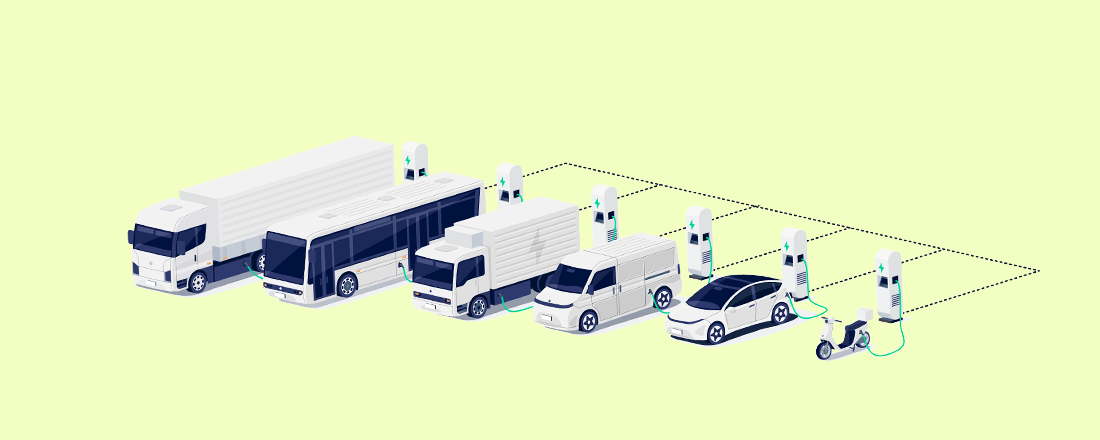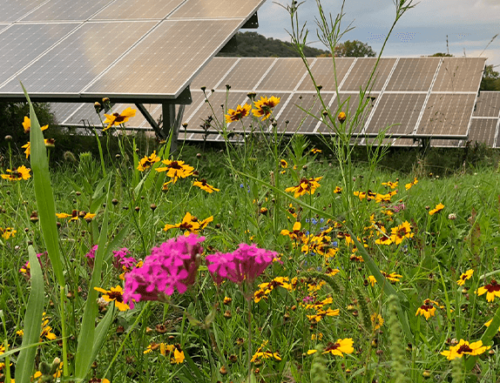In this article we’ll explore electrification programs and incentives to help fleet managers:
● Swap out old vehicles for electric models
● Install charging infrastructure
Buses and light-duty fleet vehicles make up around 21% of vehicles on the road and more than a quarter of transport-related emissions. Transportation authorities and local governments across California are taking steps to encourage the electrification of vehicle fleets for a cleaner and more sustainable transportation future.
Are you a fleet manager interested in electrification? Electrifying your fleet can help your organization reduce operating costs and meet emissions reduction goals. EVs also offer lower maintenance & higher uptime that directly benefit fleet operators. MCE wants to connect you to the resources and information that you need to start electrifying.
Vehicle electrification offerings
Clean Vehicle Rebate Project (CVRP, state-funded)
- Who is eligible:
- California-based public fleets, businesses, non profits, tribal communities, and federal entities (ie. anyone)
- Vehicles eligible:
- Fuel Cell, EVs, Plug-in Hybrid (PHEV), zero-emission motorcycles
- Funding available:
- $523 million total (May 2022)
- Up to $7,000 per vehicle for purchase or lease
Hybrid and Zero Emission Truck and Bus Voucher Incentive Project (California)
- Who is eligible:
- California-based drayage operators, public bus operators, innovative small e-Fleets (ISEF, separate funding available for this program)
- Vehicles eligible:
- Medium/heavy duty zero-emission school buses, vans, and trucks
- Funding available:
- $38 million for fleets of any size
- $44 million for public transit buses
- $23.6 million for ISEF (fully subscribed, funding expected to return in 2023)
- Over $120,000, depending on the class/size of the vehicle
- Who is eligible:
- Businesses, schools, and public agencies in the air district’s service area
- Vehicles eligible:
- Trucks, light duty vehicles, agricultural vehicles, off-road equipment, marine vessels, locomotives, school buses etc.
- Funding available:
- $60 Million/year
- Who is eligible:
- PG&E customers; agriculture, airport, construction, forklift, local distribution, long-haul freight, passenger shuttle, port / railyard refuse, school bus Transit Utility
- Vehicles eligible:
- Transit buses, forklift, refrigeration trucks
- Funding available:
- $236 Million total
- Up to $9,000 per vehicle
- 50% of the cost of a charger up to $42,000
TAM EV Fleet Program (Transportation Authority of Marin)
- Who is eligible:
- Marin County’s government entities, including jurisdictions, school districts and special districts.
- Vehicles eligible:
- New light duty vehicles, used light duty vehicles, medium/heavy duty vehicles
- Funding available:
- Funded through Measure B, roughly $2 Million/year
Charging infrastructure offerings
- Who is eligible :
- MCE customers; businesses, municipalities, multi-family properties
- Infrastructure:
- L1 and L2 Smart EV Chargers
- Funding Available:
- Up to $3,500 per L2 charger and up to $875 for L1 charger
- Who is eligible:
- California-based commercial vehicle operators, off-road equipment users, and independent owner operators, low income/disadvantaged communities
- Infrastructure:
- EV Charging L2 and DCFC, transformers, electric panels, demand management software
- Funding available:
- $276 Million through 2026 (for both infrastructure and vehicles incentives)
- Who is eligible
- Businesses, schools, and public agencies in the air district’s service area
- Infrastructure:
- L1 and L2 Smart EV Chargers
- Funding Available:
- $5 Million available (applications due before March 3rd, 2023)






